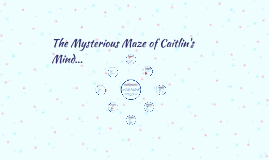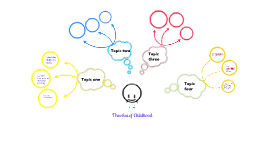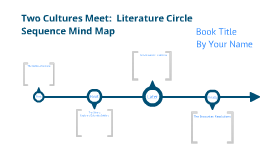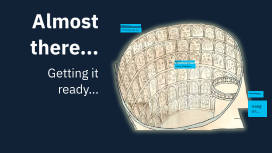Mind Map Template
Transcript: Understanding Mind Maps Mind Map Template Benefits of Using Mind Maps Definition of Mind Maps Using mind maps enhances creativity and organization of thoughts, leading to improved collaboration and productivity. They simplify brainstorming and planning processes by visually structuring ideas in a logical manner. Mind maps are diagrammatic representations that visualize relationships among ideas, concepts, or information. They consist of a central idea radiating outward, with branches and sub-branches representing related topics or data points. Historical Background The concept of mind mapping traces back to the cognitive research of the 1960s, notably popularized by Tony Buzan in the 1970s. Buzan's techniques emphasized visual learning and memory retention through structured diagrams. Applications in Various Fields Importance of Mind Maps Mind maps are versatile tools used in education, business, and personal development. They are effective for project planning, note-taking, brainstorming sessions, and enhancing presentations across different disciplines. Mind maps facilitate a clearer thought process, making complex topics more digestible. They encourage active engagement and help in recalling information, which is essential in learning and problem-solving. Components of a Mind Map Central Idea Main Branches Sub-branches Main branches extend directly from the central idea and represent the primary categories or major themes. They are crucial for breaking down the central topic into manageable sections, providing a clear structure for further exploration. A Comprehensive Guide to Creating Effective Mind Maps The central idea is the focal point of the mind map, representing the main topic or theme. It is placed at the center and sets the context for all related ideas, helping to visualize and structure the information effectively. Sub-branches emerge from main branches, elaborating on specific aspects or ideas. They allow for a deeper exploration of the topic, helping to organize detailed information that supports the primary themes. Visual Elements (Colors, Icons) Keywords and Phrases Incorporating colors and icons into a mind map boosts visual appeal and facilitates memory retention. Visual elements help differentiate concepts, illustrate relationships, and make the information more engaging to the audience. Using keywords and concise phrases in a mind map enhances clarity and comprehension. These textual elements serve as triggers for ideas and concepts, enabling quick recall and minimizing clutter. Creating a Mind Map Tools and Software Numerous tools are available for creating mind maps, including software like XMind, MindManager, and online platforms such as MindMeister. These tools provide templates, collaboration features, and easy sharing options, making mind mapping accessible to everyone. Common Mistakes to Avoid Avoid cluttering your mind map with excessive text and details, which can hinder understanding. Also, ensure branches are logically organized to maintain flow and coherence in thought processes. Step-by-Step Guide To create a mind map, start with your central idea placed in the center of the page. Branch out with main ideas, using lines to connect them, and further expand into sub-branches with details and keywords. Examples of Mind Maps Examples of effective mind maps can include brainstorming sessions for projects, study guides for exam preparation, or even meal planning. Real-world applications demonstrate the versatility of mind mapping in organizing complex information. Tips for Effective Mind Mapping For effective mind mapping, use colors to differentiate branches and include images or icons to enhance memory retention. Keep text concise and focused on keywords to improve clarity and understanding.

















